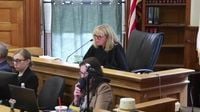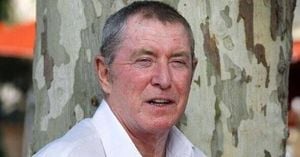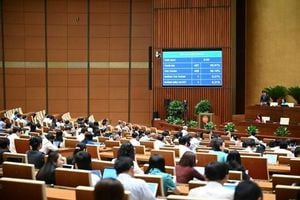The high-stakes murder trial of Karen Read, accused of killing her Boston police officer boyfriend John O’Keefe, has reached a critical juncture as the jury wrestles with complex charges and conflicting evidence nearly a year after the first trial ended in a mistrial. On June 17, 2025, the 12-person jury sent multiple questions to Judge Beverly Cannone, indicating the deliberations might be steering toward a nuanced verdict, but no final decision was reached as the day ended without a verdict.
Read, 45, stands charged with second-degree murder, vehicular manslaughter while intoxicated, and leaving the scene of a collision resulting in death. The case centers on the tragic events of January 28, 2022, when prosecutors allege Read struck O’Keefe with her Lexus SUV outside a suburban Boston house party, leaving him to die in the snow. The prosecution’s narrative is supported by vehicle data, a broken taillight on Read’s SUV with shards found at the scene, and testimony from a paramedic-firefighter who said she heard Read repeatedly exclaim, “I hit him.” Angry voicemails Read left for O’Keefe after the incident were also presented to the jury.
However, Read’s defense paints a dramatically different picture, asserting that O’Keefe was beaten inside the house by law enforcement officers, attacked by a dog, and then discarded outside to perish in the snowstorm. They contend the taillight damage resulted from a collision in the driveway, not from hitting O’Keefe. The defense also alleges a police cover-up, suggesting that lead investigator Michael Proctor, later fired for misconduct including derogatory texts about Read, may have planted evidence to frame her. Proctor’s absence from the retrial’s witness stand contrasts sharply with his prominent role in the first trial, where his inappropriate behavior was exposed.
Jurors began deliberations late last week after a trial that started in April 2025, following a nearly three-month-long first trial ending in a deadlock in July 2024. That initial trial saw over 70 witnesses testify, with jurors ultimately unable to reach a unanimous verdict after 26 hours of deliberations, citing “sharply divided” perspectives on the evidence. The mistrial led to a high-profile retrial, which has drawn intense public interest and polarized opinions, with supporters of Read and O’Keefe gathering outside the courthouse daily.
On June 17, the jury sent four questions to Judge Cannone, revealing their struggles with the charges and evidence. Their first question concerned the timeframe for the operating under the influence (OUI) charge. Prosecutors advocated for a specific time of 12:45 a.m., while the defense opposed fixing a time, arguing that Read continued drinking after returning home, which could affect her blood alcohol level. The judge wisely reminded jurors they are the sole finders of fact and should decide based on the evidence presented.
The second question asked whether video interviews of Read, including those from a documentary, were to be considered evidence. Cannone confirmed the videos were indeed evidence, advising jurors to weigh Read’s statements as they would any other evidence, giving them appropriate weight.
The third question highlighted confusion over the jury verdict slip, specifically whether a guilty verdict on the lesser charge of driving under the influence equated to guilt on the main manslaughter charge. After hearing arguments from both sides, Cannone amended the verdict slip to clarify that jurors could acquit or convict Read separately on the manslaughter OUI charge and all lesser included offenses.
Perhaps the most telling was the jury’s fourth question: “If we find not guilty on two charges but can’t agree on one charge, is it a hung jury on all three charges or just one charge?” This question struck at the heart of the trial’s complexity and echoed the deadlock that led to last year’s mistrial. Judge Cannone declined to answer directly, calling the question “theoretical” and instructing jurors not to be concerned with the consequences of their verdict. The defense objected, urging the judge to clarify that her response applied “at this time,” fearing another hung jury. Legal experts, including retired Massachusetts Superior Court judge Jack Lu, supported the judge’s cautious approach, noting the delicacy of jury deliberations and the risk of undue influence from the court’s responses.
Daniel Medwed, a Northeastern University law professor not involved in the case, offered insight into the jury’s mindset, suggesting that the questions might indicate the jury is considering a “compromise or mercy verdict,” where they might acquit on the most serious charges but convict on lesser offenses. Medwed speculated that jurors may be focusing on the OUI charge, harboring doubts about whether Read actually struck O’Keefe with her vehicle.
Throughout the trial, Read has maintained her innocence, never testifying in either the initial or retrial proceedings. Her defense team continues to argue that she is the victim of a law enforcement conspiracy aimed at framing her. This narrative has resonated with a dedicated group of supporters, many of whom, mostly women dressed in pink, have camped outside the courthouse since before the first trial began. They believe Read’s case exposes systemic corruption and hope their activism will spark justice reform.
Meanwhile, the prosecution paints a starkly different picture, emphasizing the physical evidence and witness testimony that point to Read’s guilt. The case has captivated true-crime enthusiasts nationwide, spawning podcasts, documentaries, and heated online debates. The high-profile nature of the trial has led to heightened security and an extended buffer zone around the courthouse to manage the passionate crowds on both sides.
Notably, the case has been complicated by the involvement of local blogger Aidan Kearney, known as “Turtleboy,” who has vocally supported the theory that Read was framed. Kearney’s confrontations with witnesses and subsequent indictment for witness intimidation have added another layer of intrigue, though he denies wrongdoing and claims First Amendment protection. His legal troubles remain unresolved.
As the jury prepares to return for their third full day of deliberations on June 18, 2025, the community and observers alike await a verdict that could finally bring closure to a case marked by conflicting narratives, legal battles over jury instructions, and questions about justice and truth. Judge Cannone has reminded jurors to avoid media coverage and approach their task with fresh minds each day, underscoring the trial’s gravity and complexity.
Whatever the outcome, Karen Read’s trial has already left an indelible mark on Massachusetts’s legal landscape, highlighting the challenges of delivering justice amid intense public scrutiny, competing stories, and the human emotions intertwined with tragedy.






